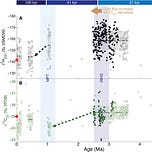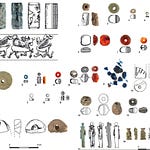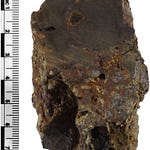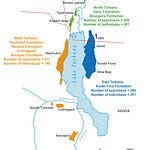In the popular narrative of human evolution, northern Africa's climate has long played a starring role. The prevailing theory suggests that shifts toward arid conditions during the Pliocene-Pleistocene transition—between about 3.5 and 2.5 million years ago—shaped our evolutionary path. It is thought that the drying of the Sahara and the breakdown of once-lush environments forced early hominins to adapt, giving rise to traits like bipedalism and changes in diet. But a new study1 challenges this idea with surprising evidence: the rains never left.
A team led by Bryce Mitsunaga of Brown University, publishing in Science Advances, examined long-chain leaf wax isotopes from marine sediments off the coast of northwest Africa. These waxes, preserved in ocean cores, retain the hydrogen isotopic signature of the rainwater absorbed by plants as they grew. The results show that, rather than declining, summer monsoonal rainfall remained remarkably consistent across the Pliocene-Pleistocene transition.
"We found that precipitation cycles didn't change much even as all these larger changes in temperature and glaciation were happening," Mitsunaga noted.
Dust Doesn’t Tell the Whole Story
For decades, paleoenvironmental reconstructions relied on the amount of Saharan dust found in deep-sea sediment cores to infer past climate. An increase in dust was taken as a sign of a drying climate. Around 2.7 million years ago, dust levels rose, aligning with the intensification of Northern Hemisphere glaciation and cooling global temperatures. It was assumed the Sahara dried out in response.

But Mitsunaga’s team looked past the dust. They analyzed the stable hydrogen and carbon isotopes in plant waxes—biochemical signatures directly tied to rainfall and vegetation. Their dataset covers a crucial stretch of time, from 3.3 to 2.5 million years ago, capturing the climate before, during, and after the major climate transition.
Their findings revealed that rainfall over northwestern Africa remained under the sway of low-latitude, tropical insolation patterns rather than glacial-interglacial climate shifts in the far north. This implies that dustier conditions may have been caused by stronger winter winds, not a lack of rain.
"The decoupling of rainfall from dust flux tells us that increased dustiness doesn’t necessarily mean it was getting drier," said co-author Amy Jewell of the University of Southampton.
Two Seasons, Two Stories
Northern Africa experiences a stark seasonal climate: summer monsoons bring rains, while winter is marked by arid conditions and dust-laden Harmattan winds. These two systems, the study shows, respond to different climate drivers.
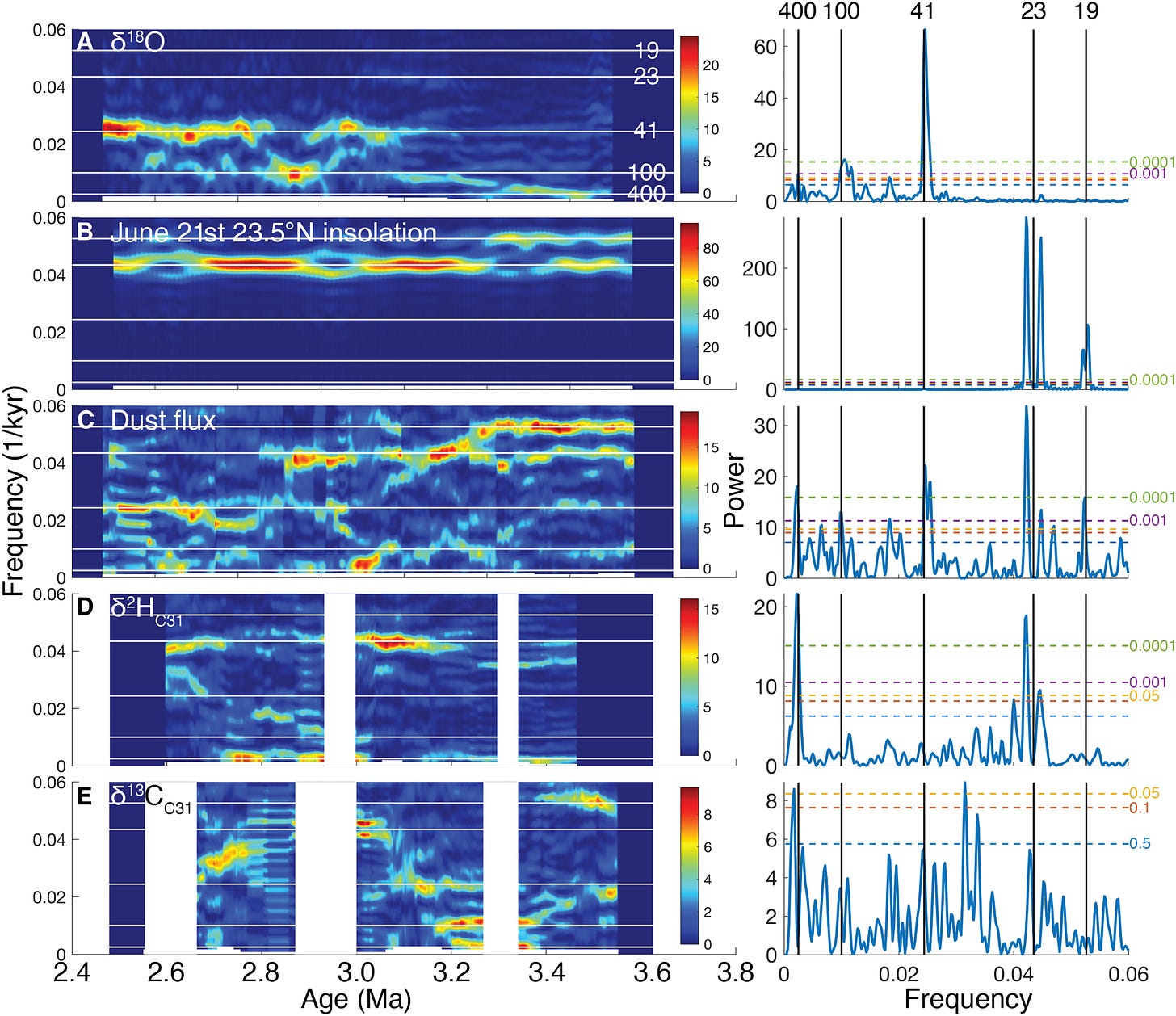
Rainfall is controlled by solar heating over the land, which powers the summer monsoon system. Dust export, however, is more sensitive to high-latitude cooling, which strengthens winter winds. So when global temperatures fell and ice sheets expanded, the winds may have ramped up, sweeping more dust into the Atlantic, without changing the actual amount of summer rain.
"We need to stop interpreting dust records as direct proxies for aridity," Jewell emphasized. "They reflect winter atmospheric circulation, not necessarily drying of the landscape."
Implications for Hominin Evolution
The stable rainfall record upends the long-assumed connection between aridification and early hominin evolution. Species like Homo habilis and Paranthropus first appear in the fossil record around this time, and their emergence has often been linked to changing ecosystems.
If the climate wasn’t drying out, other drivers must be at play. Changes in vegetation were more subtle than expected. While the study finds a slight increase in carbon isotope values—suggesting more C4 grasses over time—the shift is modest, not the wholesale biome transformation once assumed.
"The story becomes less about survival in a drying world and more about how hominins navigated a complex but stable landscape," said James Russell, a co-author and paleoclimatologist at Brown.
A New Baseline for Africa’s Past and Future
This study doesn’t just reframe the past; it offers a more precise understanding of how different parts of the climate system respond to change. That matters for the future. Northern Africa is already one of the most water-stressed regions on Earth. Knowing that past summer rains held steady during global cooling suggests they may not respond as quickly to greenhouse-driven warming either.
"Understanding how African rainfall reacted to past climate shifts helps us better predict what might happen next," Mitsunaga said.
The leaf wax data reveal a planet where summer rains stayed faithful to the rhythms of the sun, even as glaciers built up thousands of miles away. And they remind us that evolution may not have been driven by disaster, but by more subtle challenges in an environment that stayed greener longer than anyone expected.
Related Studies
Hallett, E. Y., et al. (2025). Major expansion in the human niche preceded out of Africa dispersal. Nature. https://doi.org/10.1038/s41586-025-09154-0
Tierney, J. E., et al. (2017). Rainfall regimes of the Green Sahara. Science Advances, 3(1), e1601503. https://doi.org/10.1126/sciadv.1601503
O’Mara, N. A., et al. (2022). Pleistocene drivers of northwest African hydroclimate and vegetation. Nature Communications, 13, 3552. https://doi.org/10.1038/s41467-022-31224-4
deMenocal, P. B. (1995). Plio-Pleistocene African climate. Science, 270(5233), 53–59. https://doi.org/10.1126/science.270.5233.53
Polissar, P. J., et al. (2019). Synchronous rise of African C4 ecosystems 10 million years ago in the absence of aridification. Nature Geoscience, 12, 657–660. https://doi.org/10.1038/s41561-019-0400-6
Mitsunaga, B. A., Jewell, A. M., Buchanan, S., Crocker, A. J., Wilson, P. A., Herbert, T. D., & Russell, J. M. (2025). Fundamentally unchanged northwestern African rainfall regimes across the Plio-Pleistocene transition. Science Advances, 11(25). https://doi.org/10.1126/sciadv.ads3149

